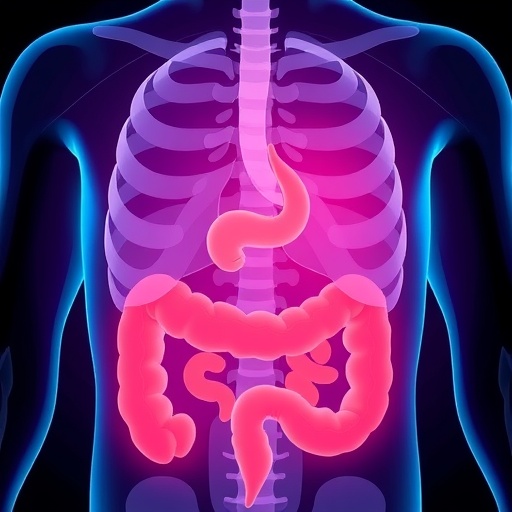LA JOLLA, CA— A new HIV vaccine from Scripps Research has shown a significantly improved ability to neutralize the virus in preclinical tests, and it will soon be studied in healthy people who volunteer to participate in clinical trials.

Credit: Scripps Research
LA JOLLA, CA— A new HIV vaccine from Scripps Research has shown a significantly improved ability to neutralize the virus in preclinical tests, and it will soon be studied in healthy people who volunteer to participate in clinical trials.
The new and unique vaccine design, described in a paper in Nature Communications on April 9, 2023, uses tiny protein “nanoparticles” to display multiple copies of HIV’s surface protein Env, thus presenting itself to the immune system much as real HIV particles would without causing HIV infection. The key innovation that explains its effects has to do with flexible sugar molecules called glycans, which normally cover Env on the real virus but are shortened in the new design. After achieving promising preclinical results, the National Institutes of Health (NIH) has agreed to sponsor a future clinical trial.
“With this design we appear to have solved a big piece of the HIV vaccine puzzle,” says the paper’s senior author Jiang Zhu, PhD, an associate professor in the Department of Integrative Structural and Computational Biology at Scripps Research.
The co-first authors of the study were postdoctoral associates Yi-Nan Zhang, PhD and Aleksandar Antanasijevic, PhD; scientific collaborator Jennifer Paynter, PhD; and postdoctoral associate Joel Allen, PhD, from the laboratory of vaccinologist Max Crispin, DPhil, professor at the University of Southampton.
The Joint United Nations Programme on HIV/AIDS (UNAIDS) estimates that 38.4 million people worldwide are currently living with HIV, and 1.5 million people became newly infected with HIV in 2021 alone. Apart from very rare cases involving bone marrow transplants, there is no cure for the infection, which must be held in check indefinitely with antiviral drugs to keep it from progressing to the deadly immune deficiency condition known as AIDS.
One of the defense strategies the virus uses is to shield its most exposed structure, Env, with glycans. Glycans are simple, chain-like molecules that are made by human cells to carry out various essential functions. Env contains sites where glycans will automatically fasten, so that when it is inside a human host, it ends up largely covered by them.
Glycans are difficult for antibodies to grip, and anything coated in them appears less like a foreign invader to the immune system. At the same time, Env proteins typically leave some of their less critical, more mutable parts uncovered by glycans, harmlessly diverting much of the antibody response.
While the best way to present glycans on the Env proteins used in vaccines is still a subject of lively debate among researchers, Zhu and his team took their vaccine design in a unique direction: not by removing glycans or adding them to no-glycan regions as some designs do, but instead simply by shortening their lengths. They reasoned that this would reduce the decoy power of no-glycan regions by reducing their contrast with glycan-dense regions—while simultaneously making vulnerable sites on the virus more accessible to antibodies. They also suspected that the desirable antibodies that can use glycans to hit Env would still be able to grip the trimmed glycans.
They designed experiments to test their predictions. Animal studies showed better antibody binding to key vulnerable sites on Env, and less binding to decoy sites. Moreover, in vaccinated animal models, the trimmed-glycan version of the vaccine induced strikingly stronger virus-neutralizing antibody responses compared to the non-trimmed-glycan version.
“In one test in mice, for example, seven out of eight immunized animal models generated robust neutralizing antibody responses, compared to only one of eight for the non-glycan-trimmed version,” Zhu says. “The difference with the glycan trimming was rather striking.”
The journey also extends beyond the lab and into the product development front. “As the exclusive licensee of this advanced vaccine platform technology, Uvax Bio is completing the GMP production of two vaccine candidates, namely, the wild-type Uvax-1197 and trimmed-glycan Uvax-1107,” added Ji Li, CEO of Uvax Bio.
In advance of the NIAID-supported clinical trial, Zhu and colleagues will do further experiments to confirm the specific antibodies, Env binding sites, glycan interactions and other vaccine components that are most important to test in this new vaccine candidate. A clinical trial may start as early as 2024.
“Single-component multilayered self-assembling protein nanoparticles presenting glycan-trimmed uncleaved prefusion optimized envelope trimers as HIV-1 vaccine candidates” was co-authored by Yi-Nan Zhang, Jennifer Paynter, Aleksandar Antanasijevic, Mor Eldad, Yi-Zong Lee, Jeffrey Copps, Linling He, Ian Wilson, Andrew Ward, and Jiang Zhu, of Scripps Research; Joel Allen, Maddy Newby, and Max Crispin of the University of Southampton; and Deborah Chavez, Pat Frost, Anna Goodroe, John Dutton, Robert Lanford and Christopher Chen of the Southwest National Primate Research Center.
Support for the research was provided by the International AIDS Vaccine Initiative (IAVI) (INV-008352/OPP1153692, INV-034657, INV-008352/OPP1153692), the Bill and Melinda Gates Foundation; the Scripps Consortium for HIV/AIDS Vaccine Development (CHAVD 1UM1 AI144462); the National Institutes of Health (P01 AI124337, R01 AI129698, R01 AI140844), the Southwest National Primate Research Center (P51 OD011133 and U42OD010442), Tulane National Primate Research Center (P51 OD011104), and UVAX BIO, LLC.
About Scripps Research
Scripps Research is an independent, nonprofit biomedical institute ranked one of the most influential in the world for its impact on innovation by Nature Index. We are advancing human health through profound discoveries that address pressing medical concerns around the globe. Our drug discovery and development division, Calibr, works hand-in-hand with scientists across disciplines to bring new medicines to patients as quickly and efficiently as possible, while teams at Scripps Research Translational Institute harness genomics, digital medicine and cutting-edge informatics to understand individual health and render more effective healthcare. Scripps Research also trains the next generation of leading scientists at our Skaggs Graduate School, consistently named among the top 10 US programs for chemistry and biological sciences. Learn more at www.scripps.edu.
Journal
Nature Communications
DOI
10.1038/s41467-023-37742-z
Article Title
Single-component multilayered self-assembling protein nanoparticles presenting glycan-trimmed uncleaved prefusion optimized envelope trimers as HIV-1 vaccine candidates
Article Publication Date
8-Apr-2023




